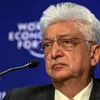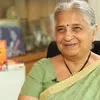From TCS to Jaguar Land Rover – how the Tata companies ignite a spirit of innovation
Innovation awards and leadership support can help an organisation recognise, promote, and celebrate business creativity. This new book provides frameworks and case studies of innovation practices in the Tata group of companies.
For an insightful peek into the innovative DNA of a global conglomerate, the book Igniting Innovation: The Tata Way by Ravi Arora provides a ringside seat of the ups and downs of organisational innovation practices. It covers issues of incentives, inspiration, and implementation, along with the priorities and tradeoffs navigated along the way.

Ravi Arora is VP for Innovation at Tata Sons, and has created programmes like Tata InnoMeter, Tata InnoVista, Tata Innoverse, and Challenges Worth Solving to build a better innovation ecosystem. He is a graduate of XLRI Jamshedpur and IIT Roorkee. His earlier book is Making Innovations Happen (see my book review here).
“The creation of a culture in an organisation is a perpetual process,” Ravi begins. Attitudes for activities like innovation are formed consciously and unconsciously as a result of leadership behaviour and prolonged practice.
The seven chapters are spread across 245 pages, but a timeline or chronology of the InnoVista activities would have been a welcome addition. Some of the figures are also very difficult to read, eg., Innovation Tree map of Titan’s innovations, and HR innovations table of TCS.
The book is a smooth read, and also packed with insights, research, lessons learned, and examples. Here are my five key clusters of takeaways from the book, along with suggestions for further research and publications. See as well my reviews of the related books The Culture Code, The Innovation Formula, and The Innovation Engine.
I. Types of awards
Instituting and popularising innovation awards helps convert innovative behaviours into an effective organisational sport if the awards are simple, inclusive, and emotionally engaging, as with the game of football. The Tata group has five types of awards, likened to an iceberg structure since some are easily visible while others are embedded deep in corporate processes.
See my summary of the Tata innovation awards structure in Table 1 below, as well as my reviews of the related books Ten Types of Innovation and 15 Paths to Disruptive Innovation. The awards process helps identify, share and celebrate innovation.

Product companies can also add service innovations, eg. Tata Steel’s one-stop Roof Junction stores to offer roofing solutions in addition to materials. Core process innovations can reduce losses and increase revenue, eg. Tata Power Delhi’s tamper-proof electric meters.
Design innovations reflect the increasing importance of intuitiveness and customer empathy. They can be reinforced via methods like design thinking and a razor focus on customer jobs to be done (see my book reviews of Competing Against Luck, Creative Confidence, and Intuitive Design).
Some other cited innovations by a Tata company helped a customer improve its dental equipment, but the company’s name did not appear on the equipment. The Open Innovation awards can include the role of an external partner, eg. Tata Steel and CAP Technologies for electro-plasma.
Of particular interest are the Dare to Try awards. They symbolise a safety net for employees to “fearlessly take intelligent risks” without penalisation or stigma (see my reviews of the related books The Other ‘F’ Word and Fail Better).
This award had its roots in the ‘Freedom to Fail’ award in the KM practice of Tata Steel, where Ravi was KM head till 2004. It draws on research into other related concepts like creative failures and intelligent or praiseworthy failures.
For example, BMW has an award for Creative Error of the Month (earlier called Flop of the Month). Another cited company has a Golden Egg award for the best mistake of the month that has yielded a useful learning. See also my writeup on Eight Lessons in Failure from Amani Institute’s Fail Faire 2018.
Research from INSEAD and SMU shows that these Tata awards encouraged audacious innovation and not reckless failure. They reward experimentation, perseverance, honest efforts, and whole-hearted attempts of scale and quality. The author cautions that this experience of failure and root cause analysis for organisational learning can also be emotionally charged, and calls for a strong leadership support.
Examples of the Dare to Try award winners are attempts at coral reef preservation (Tata Chemicals), use of bacteria for rust prevention (Tata Steel), dual core novel engine (Jaguar Land Rover), and chilled jelly drinks (Tata Global Beverages).
Interestingly, an award called Leading Edge for useful new ideas was shelved. It was decided to treat them separately from the innovation awards. Instead, another programme called Challenges Worth Solving was launched to crowdsource suggestions from employees to solve real-life problems faced by the companies.
In the long run, well-run and inclusive awards can be not just a contest but a platform to build the innovation capability across the organisation, the author argues. The innovative spirit can be extended to every discipline, role and task.
II. Definition of innovation
Company leaders need to agree upon a common definition of innovation and its impact, identify innovators, recognise their innovations, and reward innovative behaviour. Agreeing on the language and grammar of innovation helps alignment with corporate strategy and internal evangelisation, Ravi explains.
Innovations are unique and impactful, and extract value for the company. Uniqueness is defined by newness and obvious nature of the innovation. Newness can be assessed from the point of view of the customer, end consumer, partner network, industry, country, world, company, and employees. Obviousness applies to the problem (old, well-known, long-standing; new) and solution, and can be applied to embedded processes.
Benefits of innovation can be internal or external value. The Tata group assesses innovation impact for awards along four dimensions: financial, social, environmental, and change in KPI (key performance indicator). Not all dimensions are easily assessable, and some take a long gestation period; other impacts may also be one-time only.
III. Impacts of innovation
With varying degrees of objectivity and standardisation, typical innovation impacts are market cap, percentage of revenue from new products, and profitability. Internally, formal and explicit focus on innovation increases self-awareness of innovative achievements, and improves self-confidence to innovate, the author explains.
Innovation awards become successful if they achieve employee participation and management interest. One chapter digs into the numbers beneath the Tata awards performance, and connects it to successful refinements from a strategic perspective. The Organisational Innovation Quotient measures a Tata company’s progress over the years, and compares it to other companies in the group.
The Tata awards have attracted over 30,000 participants from 30 countries. Over a 10-year period, the overall participation increased 50 times. The data also yielded useful insights on projected impacts of innovation and actual outcomes, and on leadership involvement to sustain perseverance for projects with longer gestation periods.
The profile of award participants over the years showed a healthy mix of repeat participants and newcomers. The Dare to Try awards also reduce the risk of repeating the same mistakes.
IV. The innovator’s passion
One chapter digs into the dynamics of why people innovate, and why they participate in innovation competitions, uncovering some myths along the way. For example, it is not only youth or R&D teams who innovate. People innovate not just for material gains but for emotional and intellectual satisfaction. Innovators need not know how to navigate corporate bureaucracy.
Ravi explains that people innovate for the joy of creation, to contribute to a cause, to make an impact, or to explore the frontiers of knowledge. Some even find innovation addictive, and become serial innovators. The author unearths five types of creativity in employees - scientific, social, visual artistic, verbal artistic, and sports creativity.
Taking part in awards regularly makes innovators even more audacious and determined. It gives them pride and recognition. Some observed habits of successful innovators include journaling (even making diary entries in the middle of the night), collaboration with external team members, developing empathy with customers, and enjoying being challenged and challenging others.
Intrinsic attributes of serial innovators include problem spotting, visualisation, and perseverance (even ‘mad obsession’). External factors are superiors who inspire, push limits, and give freedoms, as well as peer-support from like-minded team members.
Good leaders and managers encourage employees to experiment without fear of failure; they give back-up support and do not tolerate complacency. Some of them set aside funds for experimentation, as well as time during regular weekly meetings to discuss what is new and what new things have been tried.
Great leaders create “positive pressure” and “stretch goals.” They connect innovators to other experts and business heads (see also my book reviews of Multiplier and The Moonshot Effect, and author interviews). Companies, in turn, benefit from innovation awards by getting more effective innovations, acceleration of projects, and an intellectually stimulated and inspired workforce.
V. The Tata journey
Coming up with the above innovation initiatives has not been an easy task. One whole chapter traces the history of innovation in the Tata group since its founding in 1868 in British India. The author divides the journey into four phases: unconsciously innovating, consciously improving, unconsciously improving, and consciously innovating. In other words, the company eventually evolved twin agendas of improvement and innovation, and now has systematic processes for both.
The Tata group includes companies like Tata Power, Tata Steel, Tata Motors, Tata Tea, Titan, Tanishq, Tata Sky, Croma, and TCS. Tata Motors completed its acquisition of Jaguar Land Rover in 2008.
The Tata Endowment Fund (launched before the Rockefeller and Carnegie Foundations) created TISS and TIFR; Jamsetji Tata also funded the creation of IISc. The National Centre for the Performing Arts (NCPA) was conceived by JRD Tata and Jamshed Bhabha.
Social innovations pioneered by the companies include provident funds, gratuity schemes, maternity benefits, factory schools, the eight-hour working week, leave with pay, accident compensation, retirement gratuity, and profit-sharing bonuses. The companies also learnt from best practices of Western and East Asian firms, and developed the 'humility to learn fast'.
Ravi Arora was leading the programme for knowledge management (KM) in Tata Steel, and then took over formalisation of the innovation culture in 2005. The Tata Group Innovation Forum (TGIF) was formed in 2007. The InnoMeter tool was defined along the dimensions of culture, processes and strategy, and the Tata Innovation Day was later rebranded as Tata InnoVista.
Another full chapter digs into innovation case studies in four Tata companies: Tata Steel, Tanishq, Jaguar Land Rover, and TCS, based on the five types of innovations defined above. These include Tata Steel’s corrosion-resistant rebars, ReadyBuild centres for customised rebar cutting and bending, channel management, rate charts, brand name embossing, and aesthetic steel doors for customers.
Jaguar Land Rover has a wide range of innovations as well, in areas like intelligent and connected cars, safety features, app-enabled controls for driver convenience, sustainability via incorporation of recycled aluminium, and AR experiences in the sales process. Some of these innovations have served as the springboard for bigger innovations.
Watch company Titan started the jewellery business Tanishq in a sector which was unorganised and where customers had strong loyalty to local players. The innovation covered lean manufacturing, trustworthy brands, and attractive designs.
Automotive engineers helped improve and automate processes in diamond sorting and setting, with use of robots as well. Academic institutes were created to preserve and certify traditional jewellery making skills. Awards were given for innovative ideas (Moment of Fame) and successful execution (Hall of Fame).
Other innovations at Tanishq were related to reduction of gold wastage, karat meters to measure the purity of gold, creation of brands for affordable workwear jewellery, modular components, and even crowdsourcing of designs.
Many of the HR innovations at TCS ranged from hiring phase to performance appraisal, such as IT Wiz inter-school IT quiz, Faculty Development Programme, Research Scholar Programme, Campus Commune social engagement ecosystem, and CodeVita programming contest for all engineering students.
Predictive analytics was used to identify promising talent, and chatbots were used in an ongoing manner to assess quality of conversations. The Fit4Life programme promoted wellness, and the top ten performers were sponsored for the New York marathon.
The road ahead
The book concludes with some of the author’s thoughts on future innovation directions, such as social sector startups, and leveraging KM for innovation. Startups and the gig economy have democratised technology development, Ravi observes. India can also become a “very fertile ground for practising open innovation.” In that regard, it would be useful for us to offer the following tips for innovators in the Tata teams.
1. Accelerators
Many global corporates are launching accelerators to improve their innovation quotient, grow the startup ecosystem, and benefit the overall talent pool. See my framework of 15 innovation tips: how large corporations can successfully engage with startups, as well as YourStory’s Startup Hatch series of accelerator and incubator profiles.
It would be great for Tata companies to aggressively embrace the accelerator route as well. Some Tata companies seem to have embarked on this route already, such as Tata Elxsi (see our profile here).
2. Creativity
The book briefly treats subjects like ideation and creativity, and how they feed into invention and innovation. It would be great to hear more about how Tata companies plan to invest more in understanding innovation trends, bringing in outside speakers, and conducting site visits of innovative startups. See my reviews of the books Trend-Driven Innovation, Cross-Industry Innovation, and Dual Transformation in this regard.
3. Storytelling
“Telling stories to people about their own innovations is the best way to disseminate information to make employees aware about their potential and infuse self-confidence in them,” Ravi explains. Care must be taken to help as many employees as possible to participate, prepare, and pitch for the innovation awards.
It would be great to hear more about capacity building for storytelling in the Tata Group (see my reviews of storytelling books Putting Stories to Work and Five Stars, and YourStory's Changemaker Story Canvas). Stories to spur innovation can be told in multiple formats and to different kinds of audiences for a range of impacts.
4. Intrapreneurs
The author explains that “navigating the corporate bureaucracy” need not be a key skill for innovators. This seems to contradict other researchers’ findings that a key skill for intrapreneurs is indeed to navigate the corridors of power and politics in large firms, and cultivate corporate influencers on their own.
See for example my takeaways from the Intrapreneurship Conclave. Perhaps developing intrapreneurship programmes could help the Tata companies as much as engaging with external entrepreneurs.
5. Co-creation
The Tata awards currently focus only in a limited way on open innovation and co-creation with channel partners, technology players and customers. Other findings indicate that co-creation based on ecosystem innovation or wide-lens innovation will play an increasingly important role in future, which is something Tata companies can explore more proactively (see my book reviews of Co-Create, Complete Co-Creation and The Wide Lens).
6. Social enterprise
The author rightly points out that social enterprises are trying hard to make a genuine difference to our world. Impactful social innovations have long gestation periods, and knowledge platforms can help spot and promote appropriate innovations.
Titan recently launched the Design Impact Awards for Social Change, but this doesn’t find mention in the book. It would be great to have more such initiatives from the Tata Group, as well as large-scale support for lean startup approaches to social investment (see my book reviews of A World of Three Zeros, Lean Impact and Grassroots Innovation).
In sum, this book by Ravi Arora is a must-read for innovators and leaders of large organisations, as well as startups at scale stage. It provides not just a snapshot of what an innovative company should look like, but how to get started on the innovation journey and keep fine-tuning the innovation recipe.







1560258671037.png?fm=png&auto=format&h=100&w=100&crop=entropy&fit=crop)




